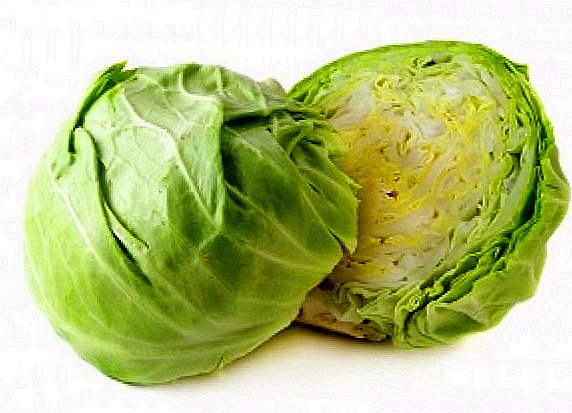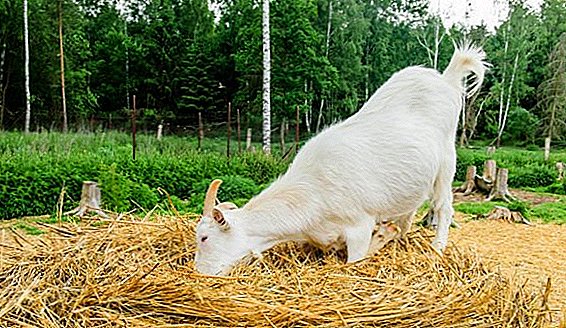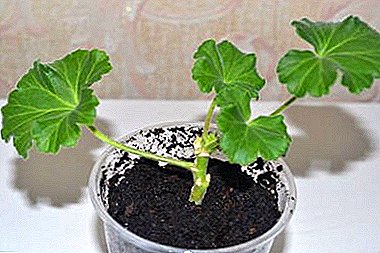 Information on how much a pig carcass can weigh is important for each farmer, since these animals are raised for the purpose of obtaining exactly meat products. The weight parameter is also important for assessing the profitability of the enterprise and calculating the norms of feeding animals. However, it is possible to determine the weight of an artiodactual without using scales - using a number of methods, which we will discuss in this article.
Information on how much a pig carcass can weigh is important for each farmer, since these animals are raised for the purpose of obtaining exactly meat products. The weight parameter is also important for assessing the profitability of the enterprise and calculating the norms of feeding animals. However, it is possible to determine the weight of an artiodactual without using scales - using a number of methods, which we will discuss in this article.
Average pig weight
The mass of an animal grown directly depends on the belonging to a particular breed. The largest breed is recognized as large white. The maximum weight of a domestic boar of this species reaches 300-350 kg.
Did you know? The official record for weight among pigs beat a boar, known by the nickname Big Bill, in 1933 in the United States. He weighed 1153 kg. The body length of the record holder was 274 cm, and the height at the withers - 152 cm
For pigs, the normal average weight is 200-250 kg. At the same time, for example, a small-sized Vietnamese breed can gain 140 kg, and a sow of a large white variety weighs 2 times more - up to 330-350 kg.
Another important factor in the addition of piglets in the mass is the proper quality nutrition. A piglet weighing 50-60 kg at the age of 3-4 months, subject to active eating of food over the next 3 months, reaches 90 kg or more.
Methods for determining
In accordance with what goal the farmer pursues, the method of how to calculate the mass of an artiodactyl is also selected. Without weighing, this parameter is usually determined by age, by size, and also by calculating the fattening coefficient. 
According to the table
Calculate the weight of pigs can be, relying on the average information about their development by age in months - the details are proposed in the table below.
Important! Do not feed or water the cattle for 2-3 hours before measuring or weighing cattle. In this case, the resulting parameter will be as close as possible to the reliable one.
According to the formula
The question of how to measure the mass of a domestic boar is easily solved with the following formula:
mass = (1.54 × X + 0.99 × K) - 150.
The circumference of the chest (X), measured using a tape measure, multiply by 1.54, and the length of the body (K) - by 0.99. The results obtained add and subtract 150 from the amount received. The final figure shows the approximate weight value.
By category of fatness
Another way to calculate the parameter we need without weights is the orientation on the degree of feeding. According to the results of measurements and determine how much the animal weighs. It is important to choose the right category for which the artiodactic belongs.
So, if a pig is rather thin and shallow, then the degree of fatness will be 162. If the boar differs in average size, then 156. And with normal or maximum fattening, the indicator will be 142. 
Piglets weight gain table
This table will help you understand how you can measure the weight of a pig for months.
| Age in months | Weight per period, kg | Daily weight gain, kg |
| 1 | 2-9 | 0,3 |
| 2 | 11-21 | 0,2-0,25 |
| 3 | 24-38 | 0,25-0,3 |
| 4 | 38-58 | 0,4-0,5 |
| 5 | 55-65 | 0,4-0,5 |
| 6 | 60-75 | 0,5-0,55 |
| 7 | 75-90 | 0,5-0,55 |
| 8 | 90-105 | 0,5-0,55 |
| 9 | 105-120 | 0,5-0,55 |
| in 10-12 months | 120-135 | 0,5-0,55 |
The average weight of a pig for slaughter
As for how to measure the slaughter mass, this indicator can be calculated using a special formula:
W.V. = (V.T.) / (J.V.) × 100%.
If decipher, then V.V. - this is a slaughter mass, or weight (this concept does not take into account the head, hooves, tail and entrails), V.T. - the weight value of the carcass, J.V. - live weight.  In animal husbandry, it is customary to be guided by an indicative yield scheme:
In animal husbandry, it is customary to be guided by an indicative yield scheme:
- from a 100-kilogram pig or boar - 72-75%;
- from 120-140 kg - 77-80%;
- over 180 kg - 80-85%.
Did you know? Pigs are perfectly trainable. Thanks to their keen sense of smell, these animals are trained to search for drugs or truffles.
Weight after slaughter
How much the carcass weighs after slaughter is the most important indicator for the manufacturer, since first of all it allows to calculate the mass of meat products sold.
Half carcass, carcass and quarter carcass
After slaughter, and then cutting (separation of viscera, head and hoofs), the live weight decreases slightly. On average, about 10-11 kg of bones, about 2.5-3 kg of waste, 23 kg of fat should be taken from a 110-pound hulk. As a result, approximately 73 kg of pure meat products remain.
The parameter of interest to us in a half carcass is about 25-35 kg. And already a quarter of the carcass will weigh 6-8 kg.
It is worth remembering that the final result is influenced not least by the skill of the meat dresser. 
Weight of other organs
With regards to the mass of the remaining parts and viscera, carcasses weighing 100 kg will have the following averaged values:
- head - 8-9 kg;
- heart - 0.32 kg;
- lungs - 0.8 kg;
- liver - 1.6 kg;
- kidneys - 0.26 kg.
Important! With any method of calculating carcass weight measurement error continues as before remain fairly high (about 20 kg). Therefore, in such important issues as the adjustment of power or the purchase and sale of cattle, it is better to use professional weight equipment.
We hope our advice will help you in animal husbandry, and you will no longer have a question about how to determine the weight of a pig. With the correct maintenance of cattle, you can get a large amount of meat products, even from one individual.












